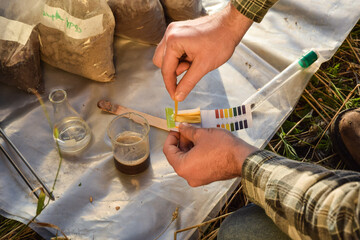
A soil testing laboratory ensures accuracy through numerous measures and satisfactory manipulation processes. Right here are a few key steps generally taken to ensure the accuracy of soil testing outcomes:
Quality assurance/Satisfactory management (QA/QC) approaches:
Soil testing laboratories put into effect QA/quality control processes to monitor and hold the accuracy and precision of their analytical strategies. this may include running manipulated samples with known properties along take a look at samples to confirm the accuracy of effects.
Approach Validation and Verification:
Before imposing a new analytical approach, laboratories validate and confirm its performance characteristics, along with accuracy, precision, sensitivity, and specificity. This involves engaging in experiments to ensure that the approach reliably produces correct outcomes beneath distinctive conditions.
Staff Training and Competency:
Laboratory staff go through rigorous training and competency assessments to make sure they are proficient in performing soil and trying out methods appropriately. This consists of education on the right sample handling, training, evaluation strategies, and statistics interpretation.
Sample Managing and Preparation:
Right sample handling and instruction are vital for acquiring correct soil check outcomes. Laboratories follow standardized protocols for accumulating, labeling, storing, and transporting soil samples to reduce contamination and hold pattern integrity.
Information Review and Verification:
All check results are very well reviewed and validated by certified employees to make sure they meet great standards and are loose from mistakes or inconsistencies. Any discrepancies or outliers are investigated, and corrective moves are taken if essential.
Accreditation and Proficiency Testing:
Many soil checking-out laboratories are seeking accreditation from identified accreditation bodies to demonstrate their competence and adherence to global quality standards. Moreover, taking part in proficiency checking-out programs permits laboratories to frequently investigate their overall performance by way of evaluating their consequences with the ones of different permitted laboratories.
What is the most accurate way to test soil?
The most accurate manner to check soil commonly includes a combination of more than one strategy tailored to the specific properties or parameters being analyzed. Soil checking out accuracy is often optimized whilst employing standardized laboratory strategies, inclusive of chemical extraction methods for nutrient evaluation, spectroscopic techniques for organic matter assessment, and precision units for pH measurement.
Is there any more accurate method to determine the soil texture?
Determining soil texture as it should be is vital for information its bodily properties and suitability for diverse programs including agriculture, engineering, and environmental assessment. whilst there’s no single approach that ensures ideal accuracy, the most typically used and dependable method for determining soil texture is the hydrometer technique or sedimentation method. This method involves dispersing soil debris in water, allowing them to settle at exceptional prices primarily based on their size, after which measuring the sedimentation rate to decide the soil’s texture class. at the same time as the hydrometer technique is widely regarded as accurate, it does require careful pattern training, precise measurement, and adherence to standardized processes to minimize mistakes.
Conclusion:
In conclusion, while soil testing won’t constantly provide perfect accuracy, it is a valuable and scientifically sound tool for assessing soil properties and informing choice-making processes throughout more than one discipline. By adhering to standardized protocols, enforcing first-class control measures, and interpreting outcomes with an appropriate warning, soil trying out laboratories can ensure that their findings are accurate and reliable within the context of their supposed applications.